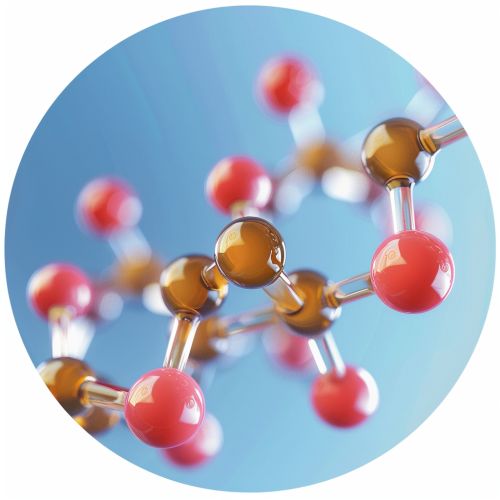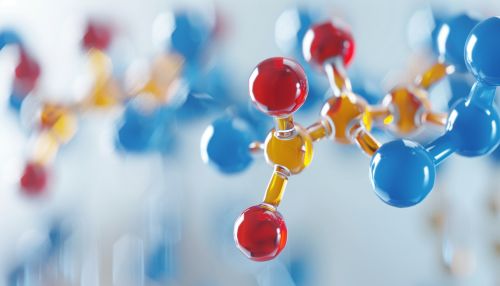Riboflavin
Introduction
Riboflavin, also known as vitamin B2, is a water-soluble vitamin that plays a crucial role in maintaining human health. It is an essential component of the coenzymes flavin mononucleotide (FMN) and flavin adenine dinucleotide (FAD), which are involved in various cellular processes, including energy production, cellular function, and metabolism of fats, drugs, and steroids. Riboflavin is naturally present in some foods, added to others, and available as a dietary supplement.
Chemical Structure and Properties
Riboflavin is a yellow-orange crystalline compound with the molecular formula C17H20N4O6. It consists of a ribitol moiety attached to a flavin ring system. The flavin ring is responsible for the compound's distinctive yellow color, which is used as a visual indicator in various biochemical assays.


Riboflavin is relatively stable when exposed to heat but is sensitive to light, especially ultraviolet light, which can cause it to degrade. This photodegradation can reduce the vitamin's effectiveness and is a consideration in the storage and handling of riboflavin-containing foods and supplements.
Biological Role
Riboflavin is a precursor of the coenzymes FMN and FAD, which are essential for the activity of various flavoproteins. These flavoproteins are involved in redox reactions, which are critical for cellular respiration and energy production. Riboflavin-dependent enzymes play a role in the electron transport chain, where they facilitate the transfer of electrons from nutrients to oxygen, ultimately producing ATP, the primary energy currency of the cell.
Metabolism
Riboflavin is absorbed in the small intestine through a carrier-mediated process. Once inside the cells, it is phosphorylated to form FMN, which can be further converted to FAD. These coenzymes participate in numerous metabolic pathways, including the Krebs cycle, fatty acid oxidation, and the metabolism of amino acids and carbohydrates.
Dietary Sources
Riboflavin is found in a variety of foods, both animal and plant-based. Rich sources include milk and dairy products, eggs, lean meats, green leafy vegetables, nuts, and legumes. Some cereals and grains are fortified with riboflavin to help prevent deficiencies in populations with limited dietary diversity.
Deficiency and Health Implications
Riboflavin deficiency, also known as ariboflavinosis, can lead to various health issues. Symptoms of deficiency include sore throat, redness and swelling of the lining of the mouth and throat, cracks or sores on the outsides of the lips (cheilosis) and at the corners of the mouth (angular stomatitis), inflammation and redness of the tongue (magenta tongue), and a moist, scaly skin inflammation (seborrheic dermatitis).
Severe riboflavin deficiency can impair the metabolism of other B vitamins, such as niacin and vitamin B6, leading to broader metabolic disturbances. Populations at risk for riboflavin deficiency include the elderly, alcoholics, individuals with chronic illnesses, and those with limited dietary intake.
Clinical Applications
Riboflavin has several clinical applications, particularly in the treatment and prevention of certain medical conditions. It is used as a therapeutic agent in the management of migraine headaches, where high-dose riboflavin supplementation has been shown to reduce the frequency and severity of migraines. Riboflavin is also used in the treatment of some genetic disorders that affect riboflavin metabolism, such as multiple acyl-CoA dehydrogenase deficiency (MADD).
Recommended Dietary Allowances
The Recommended Dietary Allowances (RDAs) for riboflavin vary by age, sex, and life stage. For adults, the RDA is 1.3 mg/day for men and 1.1 mg/day for women. Pregnant and lactating women have higher requirements, with RDAs of 1.4 mg/day and 1.6 mg/day, respectively. These recommendations are designed to meet the nutritional needs of the majority of the population and prevent deficiency.
Toxicity
Riboflavin has a low potential for toxicity due to its water-soluble nature, which allows excess amounts to be excreted in the urine. No adverse effects have been associated with high intakes of riboflavin from food or supplements, and the Institute of Medicine has not established a Tolerable Upper Intake Level (UL) for riboflavin.
